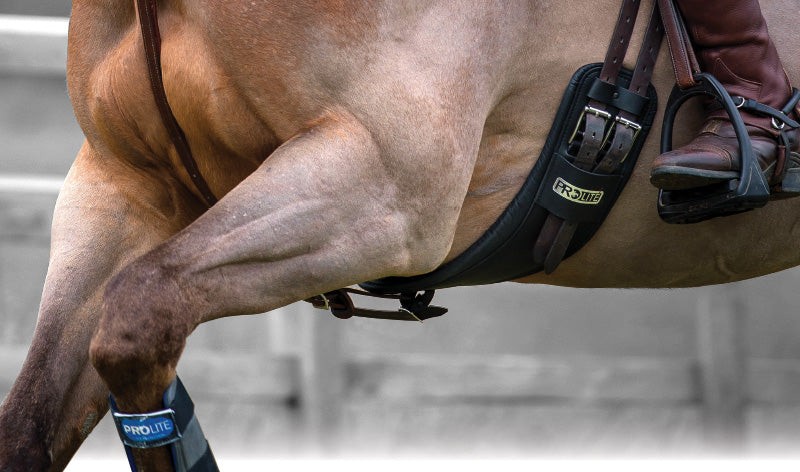
PROLITE GIRTH FITTING
The Prolite Girth needs to be fitted correctly in order to ensure the maximum benefits. Follow these guidelines:
1. Prolite Girths are measured in the standard way - buckle end to buckle end.
2. They come in two sizes – narrow gauge and standard.
Narrow gauge girths are designed specifically to fit horses (and ponies) with a narrower rib cage.

If the flat area between the horse’s elbows measures less than 20cm, your horse needs the narrow gauge.

If you don't have a measuring tape, try one of the following methods to estimate what width girth your horse needs.
- If a sweat scraper won’t fit between the front legs, the horse is a narrow gauge fit.
- Or, if the palm of your hand lays flat between the front legs, the horse is more likely to be a standard fit.
3. Make sure you fit the girth with the curved section facing forward (towards the forelimbs). The front of the girth is clearly marked.

4. The aim when fitting the Prolite Girth is to get the buckles away from the pressure-sensitive area behind the elbows – so fit the longest length possible. As a general rule, fit the girth’s top edge as close to the bottom edge of the saddlecloth as possible when fully tightened. Obviously, this depends on the size of the saddlecloth, so an alternative guide on a dressage saddle is to have just two billet holes remaining on both sides of the saddle.
5. Always girth up evenly on both sides.
6. DO NOT use the billet keeper. DO use the buckles

7. Don’t pull the horse’s front leg forward after girthing up
We have found that stretching the horse’s front leg like this simply draws more skin forward into the sensitive area behind the elbow.
8. It is not uncommon for there to be a gap a the front edge of the girth between the material and the horse’s sternum, particularly when the horse is standing still.

This is part of the design and the front edge of the girth is not supposed to fit tightly against the horse’s skin.
The Prolite girth has a ‘buffer zone’ which ‘floats’ and allows the muscles of the shoulder girdle to move under the girth, instead of being blocked by a hard edge of a normal girth.
As the horse moves and the body posture changes, the space will reduce and may disappear altogether when the muscle bulk is under the girth.
The gap at the front does not indicate that pressure has transferred to the back edge of the girth.


